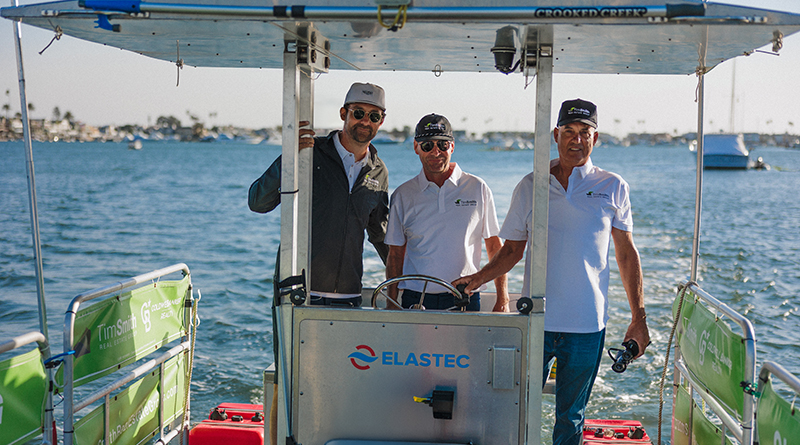In this second part of my tips for going up your sailboat’s mast, I’ll take a look at what you need to think about when going up solo. While having help to get you up rig is certainly nice, there are times that going up solo might be the only option. Fortunately, sailors have come up with methods for solo mast climbing that make it safer and relatively easy in the right conditions’ mast steps, block-and-tackle setups, the ATN Mastclimber and the Mast Mate are just a few.
Mast steps are an obvious choice when thinking about assistance for solo climbing. There are foldable and non-foldable mast steps on the market and they make for a convenient way to climb a mast at a dock or in a calm anchorage. Drawbacks are that they can be clumsy to get up and down on, they add windage aloft and they may be a snagging point for sails, halyards and lazy jacks. A nice place to have a set of foldable mast steps is a few feet below the masthead so you have a platform to stand on while working. It is not advisable to use mast steps at sea and you should always use a halyard when climbing as the swinging motion increases as you go up. The problem can be, how do you safely climb mast steps and use a halyard as a safety line at the same time? This is where a block-and-tackle setup comes in handy.
There are various types of setups that sailors use. The system that I prefer is two large ratchet blocks with a long length of double braided line between them attached to a rigging harness. I hoist the top block on a primary halyard and safety halyard to the masthead. With the blocks set in the ratchet position I can then climb and pull myself up the mast. When I want to stop and work, the blocks don’t spin because they are in ratchet mode and when I need to come back down I take the bottom block out of ratchet mode to safely lower myself. I prefer this method as I have full control of going up and down and can easily adjust myself anywhere on the mast; plus, it’s a pretty good upper body workout.
The ATN Mastclimber (www.atninc.com) is another go-it-alone system that allows you to climb without assistance or winches. The Mastclimber is basically a bosun’s chair with two webbed foot-loops and jammers that attach to a halyard that has been made fast on deck. With this system, the jammers, or ascenders, as mountain climbers call them, get attached to the halyard, and you sit in the bosun’s chair with your feet in the loops and “inchworm” your way up the line. The nice part about the Mastclimber is that it allows you to easily get aloft and work above the masthead because you are standing in the loops.
Another option for going aloft, similar to fixed mast steps, is the Mast Mate (www.mastmate.com). The Mast Mate is a webbed ladder that gets fed into the mast track and hoisted on the main halyard. Like mast steps, I would only use this in a calm anchorage or at a dock, as it is slightly clumsy to climb. The other drawback is that you have to be able to feed it into your mast track above the mainsail slides in order to get the Mast Mate’s slugs into the track. I can see how a lot of sailors prefer the Mast Mate to installing steps on both sides of the mast, though, and it is really easy for one person to use.
Another climbing product is the Yacht Mast Ladder. Similar to the Mast Mate in that it is hoisted on a halyard and led up the mast by slugs, it actually has ladder rungs instead of loops. It is made to order based on the height of your mast and spreader configuration and can be used on a variety of masts.
No matter how you choose to go up your mast alone, be sure to practice first in a calm setting. Know your halyards and trust the equipment you are using. Once you get up there, enjoy the view!







